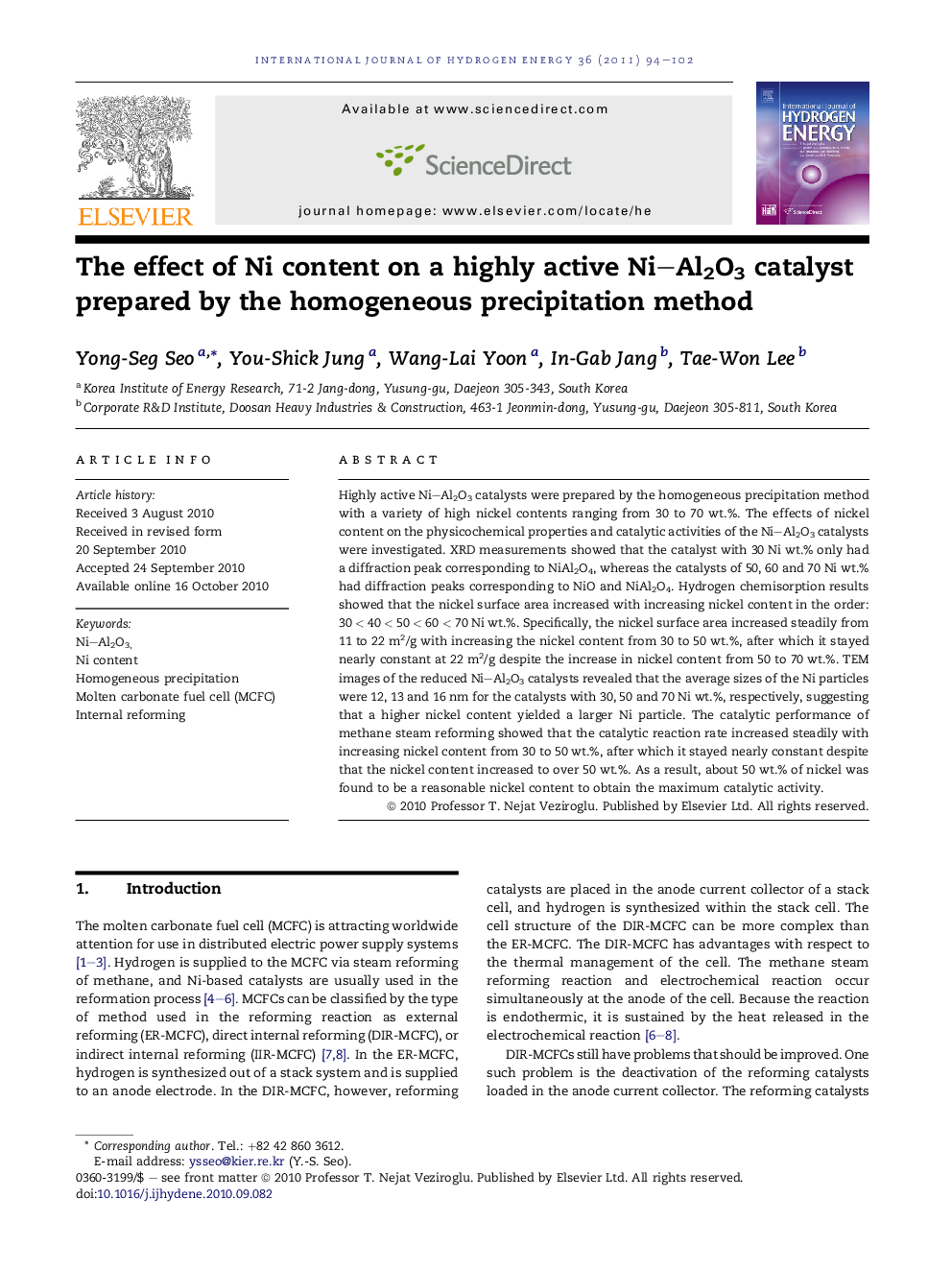| Article ID | Journal | Published Year | Pages | File Type |
|---|---|---|---|---|
| 1277757 | International Journal of Hydrogen Energy | 2011 | 9 Pages |
Highly active Ni–Al2O3 catalysts were prepared by the homogeneous precipitation method with a variety of high nickel contents ranging from 30 to 70 wt.%. The effects of nickel content on the physicochemical properties and catalytic activities of the Ni–Al2O3 catalysts were investigated. XRD measurements showed that the catalyst with 30 Ni wt.% only had a diffraction peak corresponding to NiAl2O4, whereas the catalysts of 50, 60 and 70 Ni wt.% had diffraction peaks corresponding to NiO and NiAl2O4. Hydrogen chemisorption results showed that the nickel surface area increased with increasing nickel content in the order: 30 < 40 < 50 < 60 < 70 Ni wt.%. Specifically, the nickel surface area increased steadily from 11 to 22 m2/g with increasing the nickel content from 30 to 50 wt.%, after which it stayed nearly constant at 22 m2/g despite the increase in nickel content from 50 to 70 wt.%. TEM images of the reduced Ni–Al2O3 catalysts revealed that the average sizes of the Ni particles were 12, 13 and 16 nm for the catalysts with 30, 50 and 70 Ni wt.%, respectively, suggesting that a higher nickel content yielded a larger Ni particle. The catalytic performance of methane steam reforming showed that the catalytic reaction rate increased steadily with increasing nickel content from 30 to 50 wt.%, after which it stayed nearly constant despite that the nickel content increased to over 50 wt.%. As a result, about 50 wt.% of nickel was found to be a reasonable nickel content to obtain the maximum catalytic activity.
